What You’ll Learn From This Report
Executive Summary
Our current food system is not inevitable. Decades of misguided farm policy designed by agribusiness and unchecked corporate consolidation have wreaked havoc on family farmers, food workers, rural communities, and public health. Today, one in seven households with children is food-insecure; median farm income is negative; slaughterhouse workers suffer double the rate of reported injuries and illnesses than workers in the manufacturing sector as a whole; and rural communities continue to decline as factory farms expand.1U.S. Department of Agriculture (USDA). Economic Research Service (ERS). “Food insecurity for households with children rose in 2020, disrupting decade-long decline.” February 7, 2022; USDA ERS. “Farm household income forecast for 2021 and 2022 — February 2022 Update.” February 4, 2022; U.S. Department of Labor. Bureau of Labor Statistics. 2020 Survey of Occupational Injuries and Illnesses. Available at https://www.bls.gov/iif/soii-data.htm#newsrelease; Food & Water Watch (FWW). The Economic Cost of Food Monopolies: The Hog Bosses. May 2022.
Independent farmers have been sold out by agricultural policy that favors corporate interests above farmers, consumers, and the environment. Deregulation has left farmers vulnerable to wild swings in the prices of commodities like corn, wheat, and milk — wheat has sold below the cost of production for 9 of the last 10 years.2USDA ERS. Commodities Costs and Returns. Available at https://www.ers.usda.gov/data-products/commodity-costs-and-returns/commodity-costs-and-returns/#Historical%20Costs%20and%20Returns:%20Milk. Accessed June 2022. Meanwhile, agribusinesses reap huge profits by purchasing artificially cheap commodities and processing them into factory farm feed, ethanol, and food additives.3Ayazi, Hossein and Elsadig Elsheikh. Haas Institute for a Fair and Inclusive Society. “The US Farm Bill: Corporate Power and Structural Racism in the United States Food System.” October 2015 at 26 to 27.
Small and mid-sized farms are at the mercy of agribusinesses, which have gotten larger and more powerful through decades of mergers and acquisitions. Today, just a handful of companies control the market for almost every agricultural product. This means lower income for farmers and higher prices for consumers.4USDA. Agricultural Marketing Service (AMS). “Packers and Stockyards Division: Annual Report 2018.” August 2019 at 9; Kelloway, Claire and Sarah Miller. Open Markets Institute. “Food and Power: Addressing Monopolization in America’s Food System.” March 2019 at 2 and 6; Mitchell, Stacy. Institute for Local Self-Reliance. “Walmart’s Monopolization of Local Grocery Markets.” June 2019 at 3 to 4; FWW. “Factory Farm Nation: 2020 Edition.” April 2020 at 8 to 9.
A growing movement of farmers and consumers is working to rebuild local food systems and put more profit directly in the hands of farmers. But only structural changes at the federal level can create equity in our food system. The Farm Bill, rewritten every five years, offers a critical opportunity to fundamentally transform federal farm and food policy. Instead of catering to agribusiness’s greed for cheap raw materials, the next Farm Bill should ensure functional, fair markets. A fair Farm Bill would let the people who grow our food earn a decent living, practice environmental stewardship, and rebuild the infrastructure that consumers need to access sustainably grown, regionally produced food.
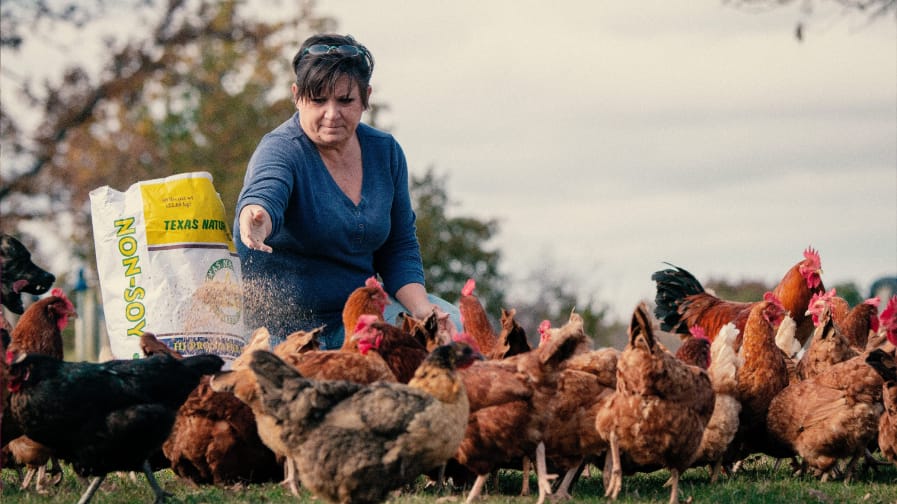
The Farm Bill
Whether or not you farm for a living, the Farm Bill impacts your daily life. It determines which crops qualify for federal farm safety net programs, thereby creating incentives to grow particular foods. It funds conservation practices to protect farmland for future generations — while also giving handouts to factory farms.5FWW analysis of EQIP payments, using data received from the Environmental Working Group. It also funds the Supplemental Nutritional Assistance Program (SNAP), formally known as the food stamp program, to ensure that everyone has enough to eat.
The Farm Bill shapes what food is grown, how it is produced, where it is sold, and who can afford to buy it.
For example, current farm policy favors large, industrial-scale agriculture and the overproduction of commodity crops. This is in part because major commodities like corn and soybeans are eligible under safety net programs such as federal crop insurance, which buffers farm income from losses due to disasters or low prices.6Shields, Dennis A. Congressional Research Service (CRS). “Federal Crop Insurance: Background.” R40532. August 13, 2015 at summary; Schnepf, Randy. CRS. “2018 Farm Bill Primer: Marketing Assistance Loan Program.” IF11162. April 3, 2019 at 2. Yet many varieties of fruits and vegetables are ineligible for crop insurance, increasing the risks of growing these “specialty” crops.7Rosa, Isabel and Renée Johnson. CRS. “Federal Crop Insurance: Specialty Crops.” R45459. Updated January 14, 2019 at 9; Smith, Trevor J. “Corn, cows, and climate change: How federal agricultural subsidies enable factory farming and exacerbate U.S. greenhouse gas emissions.” Washington Journal of Environmental Law & Policy. Vol. 9, Iss. 1. March 2019 at 43 to 44. It is no coincidence that the main ingredients in the typical American diet feature corn and soybeans, both as food additives and as corn-finished meat. The Farm Bill keeps these inputs cheap and abundant for corporations that want them.
As long as corporations maintain a stranglehold over our food system, farmers will not get fair prices for their crops and livestock, and consumers will have less access to nutritious, affordable food.
2018 Farm Bill Titles
- I. Commodity Programs
- II. Conservation
- III. Trade
- IV. Nutrition
- V. Credit
- VI. Rural Development
- VII. Research, Extension, And Related Matters
- VIII. Forestry
- IX. Energy
- X. Horticulture
- XI. Crop Insurance
- XII. Miscellaneous
What is the Farm Bill?
The Farm Bill establishes the policies and government supports for a range of U.S. agricultural priorities. It is divided into sections (called titles) that cover specific program areas. The Farm Bill is reauthorized (rewritten and voted on by Congress) every five years.8CRS. “2018 Farm Bill Primer: Agriculture Improvement Act of 2018.” IF11126. March 2019 at 1.
The 2018 Farm Bill had 12 titles. Historically, most Farm Bill spending — three-quarters in the 2018 bill — goes to the Nutrition title, which funds SNAP. There are also titles that offer credit to farmers, fund conservation programs, and encourage rural development, among many other programs.9Ibid. at 1 and 2.
The most controversial title is Commodities, which addresses the raw materials of our industrial food system — mainly corn, wheat, and soybeans, but also cotton and other major grain and oilseed crops. The Commodities title provides crop insurance and farm payments to protect farmers against declining revenue from price losses or weather events.10CRS. “Preparing for the Next Farm Bill.” R47057. March 31, 2022 at 3: Schnepf, Randy. CRS. “2018 Farm Bill Primer: Title I Commodity Programs.” IF11164. April 3, 2019 at 2, table I.
Critics across the political spectrum point to the Commodities title as a posterchild for government waste. Although the title incentivizes the overproduction of feed crops, simply eliminating farm payments and insurance programs is not a roadmap to a fair food system. Instead of cutting the safety net for struggling farmers, we need to fix it to require organic regenerative practices and expand it to include more specialty crops. To begin, we need to understand the political and social history that brought us where we are.
Historical Context of U.S. Farm Policy
The three biggest trends in agriculture over the past four decades have been the rise of corporate consolidation, the shredding of agricultural supply management, and the decline of independent, family-scale farms. These trends are not coincidental, but part of a coordinated effort by multinational agribusinesses to squeeze more revenue from the food system — at the expense of farmers and rural communities.
Foodopoly
Corporate leaders strive to amass market power through predatory practices. But for much of the twentieth century, our legislatures and courts served as a check to their ambitions. The “trust-busting” era saw federal antitrust legislation designed to prevent agricultural corporations from getting too big and protect the interests of farmers, suppliers, and small businesses. Courts also ruled against agribusinesses that engaged in predatory practices, in some cases even forcing them to break up, as in the case of supermarket giant A&P.11Lauck, Jon. “Toward an agrarian antitrust: A new direction for agricultural law.” North Dakota Law Review. Vol. 75, No. 3. 1999 at 450 to 453 and 457 to 463; Booher, Stephen R. “Enforcement of antitrust proscriptions against price discrimination and price cutting by chain stores — The A&P case.” Ohio State Law Journal. Vol. 17, Iss. 2. 1956 at 208 to 211.
So corporate leaders tried a different approach: swaying economists and politicians to embrace a pro-corporate approach to antitrust, packaged as free market economics. “Economic efficiency” trumped concerns for farmer or consumer welfare. These and other neoliberal principles found fertile ground within the Reagan administration but were embraced by subsequent Democratic and Republican administrations alike. For instance, while the federal government blocked more than a thousand mergers and acquisitions between 1950 and 1980, it has taken little action since.12Robinson, William J. and Ashley M. Koley. “Antitrust enforcement against oligopolies.” Antitrust Law Daily. October 2019 at 1; Lauck (1999) at 456 to 457 and 500 to 504; Mitchell, Stacy. Institute for Local Self-Reliance. “The rise and fall of the word ‘monopoly’ in American life.” Atlantic. June 20, 2017. Even the Obama administration, which talked a big antitrust game, enabled some of the largest agribusiness megamergers in history, including Kraft-Heinz.13Food & Power. [Database]. “Mergers & Acquisitions.” Available at https://www.foodandpower.net/mergers-acquisitions. Accessed June 2022 and on file with FWW.

With federal courts and regulators blessing corporate consolidation, the companies that buy, process, and sell raw agricultural products — meatpackers, food processors, and food retailers — ballooned. Mergermania spread across the food supply chain. Today, just four companies sell 85 percent of corn and 76 percent of soybean seeds (see Fig. 1). Four companies control 84 percent of the pesticide market. And the onslaught of recent mergers between seed and agrochemical companies has given just three companies top positions in both the seed and agrochemical markets, with Bayer-Monsanto the dominant player.14Mooney, Pat. ETC Group. “Blocking the Chain: Industrial Food Chain Concentration, Big Data Platforms and Food Sovereignty Solutions.” October 2018 at 4 to 8; Kelloway and Miller (2019) at 6 to 7.
At harvest, commodity farmers sell into markets where just four firms control 90 percent of grain trading.15Kelloway and Miller (2019) at 6 to 8. Hog farmers also face reduced competition, now that four companies slaughter over two-thirds of all hogs.16USDA AMS. “Packers and Stockyards Division: Annual Report 2019.” August 2020 at 9. Many hog farmers are no longer independent but instead work under production contracts with the powerful processing corporations.
A similar model of contract farming dominates the poultry industry, accounting for 96 percent of all broiler (meat) chickens slaughtered in the United States.17Lawrence, John D. “Hog marketing practices and competition questions.” Choices. Vol. 25, No. 2. 2nd Quarter 2010 at 2 to 3 and 5; Sexton, Richard. “Market power, misconceptions, and modern agricultural markets.” American Journal of Agricultural Economics. Vol. 95, Iss. 2. January 2013 at 6 to 7; MacDonald, James et al. USDA ERS. “Contracts, Markets, and Prices.” Agricultural Economic Report No. 837. November 2004 at 41. Poultry companies are the most vertically integrated of all meat processors, meaning the same company owns everything from the birds to the feed and medicine to the slaughterhouses. Farmers, however, are required to build and upgrade costly barns and other infrastructure and are burdened with massive waste disposal and debt.18FWW analysis of USDA. National Agricultural Statistics Service (NASS). “Quick Stats.” Available at https://quickstats.nass.usda.gov. Accessed August 2019; MacDonald, James M. USDA. “Technology, Organization, and Financial Performance in U.S. Broiler Production.” Economic Information Bulletin Number 126. June 2014 at 1 and 15; Andrews, David and Timothy J. Kautza. Report of the Pew Commission on Industrial Farm Animal Production. “Impact of industrial farm animal production on rural communities.” 2008 at iv.
Reduced competition impacts farmers and consumers alike. Take pork, for example: U.S. farmers today earn $2 less per pound of pork than they did in 1982 (adjusted for inflation). That’s a third of the value earned in 1982. But as consumers, we are paying only around $1 less per pound at the grocery checkout. Pork processors and retailers capture the other dollar.19USDA ERS. “Pork values and spreads.” Available at https://www.ers.usda.gov/data-products/meat-price-spreads. Accessed August 2021.
Waves of mergers and the rise of cutthroat competitors like Walmart have also transformed the grocery retail industry. Today, just four companies take in over three-quarters of all U.S. grocery sales. Walmart alone gobbles up $1 out of every $3. Meanwhile, local shops have shuttered and many communities, rural and urban alike, lack access to fresh food.20Fernandez, Cecilia. IBISWorld. “Supermarkets & Grocery Stores in the US.” US Industry (NAICS) report 44511. November 2020 at 9 and 13 to 14; Mitchell (2019) at 3 to 4; Saitone, Tina L. and Richard J. Sexton. “Concentration and Consolidation in the U.S. Food Supply Chain: The Latest Evidence and Implications for Consumers, Farmers, and Policymakers.” Economic Review. Special Issue 2017 at 36; FWW analysis of U.S. Census Bureau. County Business Patterns. Available at https://www.census.gov/programs-surveys/cbp.html. Accessed June 2021.
Corporate farm bills
Agribusinesses used their growing market power to both undercut competitors and rewrite the rules of the game, including the U.S. Farm Bills. At least 600 companies spent over half a billion dollars lobbying for the 2014 Farm Bill alone. This includes leading corporations in trade, banking, transportation, and energy.21Ayazi and Elsheik (2015) at 34.
The first Farm Bill, passed in 1933 as part of the New Deal, was the most comprehensive federal intervention into the farm economy. Its goal was to free farmers from the boom-and-bust cycles driving thousands of farms to foreclosure. Like farmers today, farmers of the 1920s faced chronic overproduction that depressed crop prices. Farmers have few options when prices decline; they may try to grow even more to squeeze out some income, even planting on vulnerable land or implementing intensive practices. By the 1930s, topsoil had so severely eroded that dust storms swept away what little remained.22Graddy-Lovelace, Garrett and Adam Diamond. “From supply management to agricultural subsidies — and back again? The U.S. Farm Bill & agrarian (in)viability.” Journal of Rural Studies. Vol. 50. February 2017 at 76.
The 1933 Farm Bill (named the Agricultural Adjustment Act) directly tackled overproduction by establishing a system of supply management. This and subsequent Farm Bills initiated voluntary programs like acreage reduction to encourage farmers to ease back production in exchange for price supports.23
Rasmussen, Wayne D. et al. USDA ERS. “A Short History of Agricultural Adjustment, 1933-75.” Agriculture Information Bulletin No. 391. March 1976 at 2 to 6; McGranahan, Devan A. et al. “A historical primer on the US farm bill: Supply management and conservation policy.” Journal of Soil and Water Conservation. Vol. 68, No. 3. May/June 2013 at 67A to 69A. The central goal of many of these programs was to achieve parity — a crop price that covered farmers’ costs of production while providing a living wage comparable to that of non-farm families.24Teigen, Lloyd D. USDA ERS. “Agricultural Parity: Historical Review and Alternative Calculations.” Agricultural Economic Report No. 571. June 1987 at iii.
Supply management programs can cost taxpayers little to nothing, as the U.S. government essentially purchased surplus grains during bumper crop years and sold them back into the market during lean ones.25Graddy-Lovelace and Diamond (2017) at 76. And farmers and consumers alike benefit from stable crop prices year after year.
But agribusinesses hated supply management. Grain purchasers challenged supply management programs from the very beginning as threats to their control over the market. Nevertheless, supply management remained a central pillar of Farm Bills into the midtwentieth century.26Ayazi and Elsheik (2015) at 24; McGranahan (2013) at 68A to 70A; Rasmussen (1976) at 4 and 6 to 14.
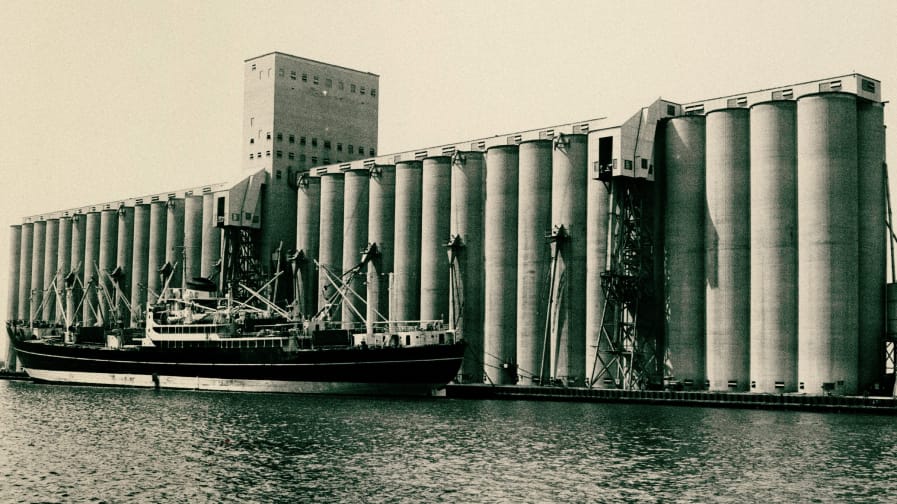
After World War II, the Eisenhower administration turned to global trade as a way to soak up crop surpluses. In a deviation from New Deal farm policies, the administration urged farmers to “get big or get out,” seeing expanding export markets as a way to increase U.S. global influence.27McGranahan (2013) at 68A to 70A. This shift toward free market ideology was no accident; corporate agribusinesses spent decades consolidating market power and growing political influence. Having the ears of Congress and officials with the U.S. Department of Agriculture (USDA), agribusinesses succeeded in chipping away supply management programs from mid-century onward.28Ibid.; Ayazi and Elsheik (2015) at 24; Rasmussen (1976) at 23 to 26.
But export markets proved unreliable; sudden drops in demand for U.S. grain ushered in new farm crises and foreclosures. Nevertheless, deregulation of farm markets intensified, culminating in the 1996 “Freedom to Farm” Bill. The bill’s proponents, including agribusiness, suggested that farmers would adjust to market conditions, growing only what was needed. Cargill public relations executives claimed that “outdated” farm programs needed to be scrapped.29Tai, Wendy, Linda Thrane and Rob Johnson. “Plowed under, the end of farm subsidies may be near.” The Spokesman-Review. December 31, 1995. The 1996 Farm Bill enshrined the false expectation that the market would replace federal farm payment programs.30Effland, Anne B. W. USDA ERS. “U.S. Farm Policy: The First 200 Years.” Agricultural Outlook. March 2000 at 25.
Reality was much different. Deregulation left farmers vulnerable to market fluctuations caused by agribusiness buyers as well as the weather; the 1996 Farm Bill soon became known as “Freedom to Fail.”31Burns, Greg. “Some of the nation’s farmers have found a dependable crop that always gives a high yield: The federal subsidy.” Chicago Tribune. April 21, 2002. When supply management policies ended, farmers made the rational decision for their individual businesses: They planted more. Farmers harvested 7.5 million more acres of corn and 7.6 million more acres of soybeans in 1997 than in 1995.32FWW analysis of USDA NASS. “Quick Stats.” The influx of grain onto the market caused the price of grains to collapse. Farmers planted additional acres to try to make up for lost income, which then depressed prices further.33Beitel, Karl. “U.S. farm subsidies and the farm economy: Myths, realities, alternatives.” Food First / Institute for Food and Development Policy. Vol. 11, No. 3. Summer 2005 at 2 to 3. From 1996 to 1998, corn and wheat prices dropped roughly 50 percent, requiring massive direct government payments to keep farmers afloat (see Fig. 3).34Scott, Robert. Economic Policy Institute. “Exported to Death: The Failure of Agricultural Deregulation.” July 1, 1999 at 1; Ayazi and Elsheik (2015) at 24 to 27.
In fact, expenditures for farm programs spiked dramatically — rising from $7.3 billion in 1996 to $12.4 billion in 1998, and then soaring to $21.5 billion in 1999, with expenditures remaining above $22 billion in 2000 and 2001.35USDA ERS. “Direct Government Payments by Program, United States, 1996-2009.” Accessed July 8, 2011 and on file with FWW. Even with these payments, U.S. net farm income declined by 16.5 percent from 1996 to 2001.36Ray, Daryll et al. University of Tennessee. Agricultural Policy Analysis Center. “Rethinking U.S. Agricultural Policy: Changing Course to Secure Farmer Livelihoods Worldwide.” September 2003 at 9. In the 2002 Farm Bill, Congress voted to make these “emergency” payments permanent rather than address the underlying cause of the price drop: overproduction.37Ibid. at 20.
Agribusinesses leapt at the opportunity to purchase artificially cheap grain, which they churned into processed food additives, ethanol, and livestock feed.38Ayazi and Elsheik (2015) at 26 to 27. This subsidy fueled the growth of factory farms, as it became cheaper to purchase feed from the market than to grow it on-farm.39Clark, E. Ann. “Benefits of re-integrating livestock and forages in crop production systems.” Journal of Crop Improvement. Vol. 12, Iss. 1-2. 2004 at 3 to 5. Diversified, family-scale farms gave way to factory farms that crowded livestock in confinement.40Wise, Timothy A. Tufts University. Global Development and Environment Institute. “Identifying the Real Winners From U.S. Agricultural Policies.” Working Paper No. 05-07. December 2005 at 1 to 4; FWW analysis of the USDA Census of Agriculture (1997, 2002, 2007, 2012 and 2017 census years).
While the 2014 Farm Bill ended direct payments, subsidies have continued through other USDA programs such as federal subsidized crop insurance, which provides some relief to farmers facing weather disasters or price slumps. Just like with direct payments, it does nothing to address the underlying cause of price slumps (overproduction) and further incentivizes specialization of crops covered under the program.41Spangler, Kaitlyn et al. “Past and current dynamics of U.S. agricultural land use and policy.” Frontiers in Sustainable Food Systems. Vol. 4. July 2020 at 12 to 13; Bruckner, Traci. “Agricultural subsidies and farm consolidation.” American Journal of Economics and Sociology. Vol. 75, No. 3. May 2016 at 628 to 633. The end result is the same: Agribusinesses continue to access a steady supply of grain sold below the cost of production42USDA ERS. Commodities Costs and Returns. Available at https://www.ers.usda.gov/data-products/commodity-costs-and-returns/commodity-costs-and-returns/#Historical%20Costs%20and%20Returns:%20Milk. Accessed June 2022. — produced on the backs of farmers and subsidized by taxpayers.
The 1996 Farm Bill should have been a cautionary tale for future Farm Bill negotiations: Short-term gains from gutting farm programs can quickly be reversed by crop price volatility and sharp economic downturns in farming. A 2011 University of Tennessee study found that if grain reserves had been in place from 1998 to 2010, all other commodity programs could have been eliminated, cutting costs by 60 percent while still protecting farm incomes.43Ray, Daryll. [Presentation]. “NFU Reserve Study.” Presented at the National Farmers Union policy conference. University of Tennessee. April 15, 2011 at 40 and 42.
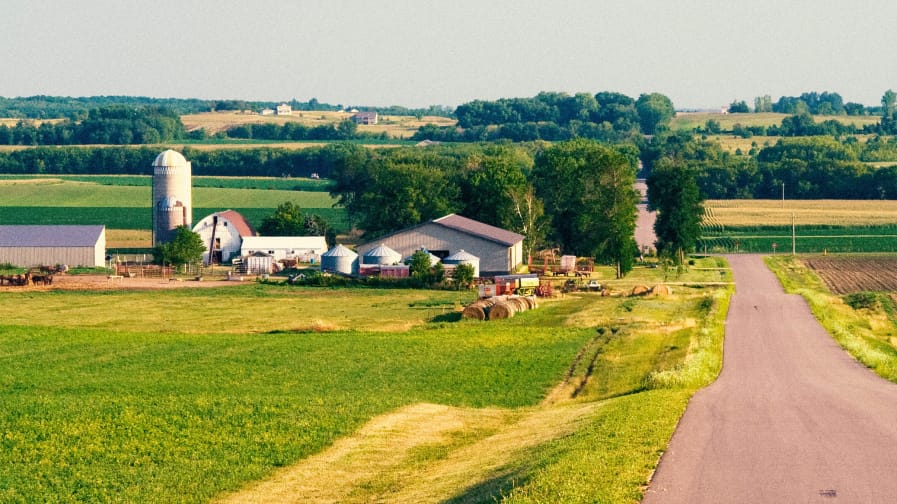
The demise of the family farm
While farmers are caricatured and villainized as grifters living high on government handouts, most farmers struggle just to cover production costs and only survive thanks to household members holding off-farm jobs. The median farm income for farm households was negative for 24 of the last 25 years.44USDA ERS. “Farm household income for 2020F — December 2020 update.” December 2, 2020; USDA ERS (February 4, 2022).
This tightly consolidated supply chain is especially vulnerable to shocks and disruptions, as we saw at the onset of the COVID-19 pandemic. Farmers who could not bring their products to market were left to euthanize herds, dump milk, and destroy ripe vegetable fields.45Corkery, Michael and David Yaffe-Bellany. “Meat plant closures mean pigs are gassed or shot instead.” New York Times. May 14, 2020; David Yaffe-Bellany and Michael Corkery. “Dumped milk, smashed eggs, plowed vegetables: Food waste of the pandemic.” New York Times. Updated March 6, 2022. Meanwhile, agribusiness giants like Tyson profited from scarcity, enjoying increased revenue in 2020 and 2021 compared to pre-pandemic levels.46Tyson Foods, Inc. U.S. Securities and Exchange Commission. Form 10-K. Commission File No. 001-14704. FY ended October 2, 2021 at 25.
History repeats itself, with today’s boom-and-bust cycles and ecological conditions eerily like those of the Dust Bowl era, with climate chaos adding more threats. This is both a warning about where we are heading and a blueprint for the robust public policy we need to reverse course.
Who Benefits From Bad Policy?
Current farm programs allow prices to fall below the cost of producing the crops. When prices fall enough, the government only reimburses farmers to cover some of their losses. The true beneficiaries of taxpayer-funded farm subsidies are factory farms, meatpackers, and food processors; subsidies simply launder money through farmers. Government payments to farmers allow buyers of cheap raw material crops to pay less. For example, a Tufts University study found that factory farms reaped $34.8 billion between 1997 and 2005 by buying feed at below-production cost.47Starmer, E. and T. A. Wise. Tufts University. Global Development and Environment Institute. “Feeding at the Trough: Industrial Livestock Firms Saved $35 Billion From Low Feed Prices.” GDAE Policy Brief No. 07-03. December 2007.
Are subsidies really the problem?
It has become common to blame every problem in the food system on misguided farm subsidy programs. But it is not that simple. Ending government payments to farmers will not fix the problems in our food supply. Subsidies are the result, not the cause, of the low prices farmers receive for their crops.
Farm program payments are not the main reason that U.S. farmers grow too much corn and soybeans. Farmers plant crops that the largest buyers demand: grain-trading companies, meatpackers and feedlots that feed corn and soybeans to livestock, and food manufacturers that use soybeans and corn in processed foods. Farmers grow what they can sell. Because of decades of corporate-controlled farm policy and consolidation of agribusiness crop buyers, commodity crops are the only option for farmers in many parts of the country.
A remote rural wheat farmer with a few thousand acres cannot suddenly switch to growing tomatoes to sell directly to consumers at the farmer’s market. The demand and infrastructure needed to sustain this type of transition away from intensive commodity crop production to regional food markets has been largely wiped out.
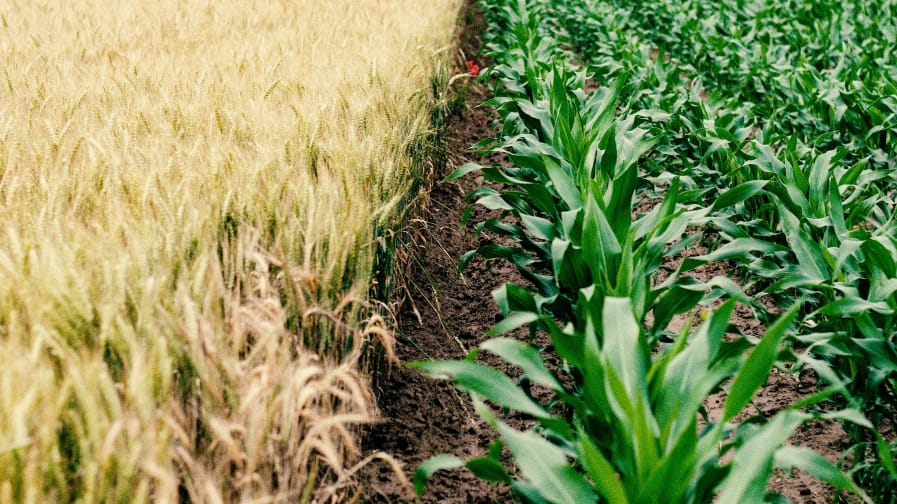
A Fair Farm Bill in Four Steps
Four fixes will make the next Farm Bill a fair Farm Bill.
1: Fix the federal farm safety net
Instead of encouraging overproduction and maintaining farm programs that mainly benefit big agribusiness, we need to restore supply management policies and price safety nets; agribusiness, not taxpayers, should pay farmers fairly for the food they grow and we eat.
The current farm safety net is just a Band-Aid on a broken system. Crop insurance provides some economic relief to farmers, but it does not address overproduction, a key contributor to price slumps. And farmers are not incentivized to implement sustainable practices that make land more resilient to future weather disasters in a changing climate.
Reinstate supply management for commodities
The first Farm Bill enacted a federal supply management program, saving countless farmers from bankruptcy.48Graddy-Lovelace and Diamond (2017) at 76.The program took marginal land out of production and provided farmers with living wages — until it was systematically dismantled by Big Ag.49Ibid.; Ayazi and Elsheik (2015) at 23 to 24. Reinstating supply management programs in the next Farm Bill would provide living wages for farmers while buffering both growers and consumers from price swings associated with boom-and-bust cycles.
Key programs include:
- Price floors that establish minimum crop prices. These used to function as non-recourse loans to farmers from the USDA (loans held on collateral — in this case, the grain harvest). So when the market price of corn or wheat falls below the established price floor, the USDA can collect the farmer’s harvest, essentially purchasing surplus grains rather than letting them flood the market.50Rasmussen (1976) at 2 to 3; Schaffer, Harwood D. et al. Agricultural Policy Analysis Center. “An Analysis of a Market-Driven Inventory Systems (MDIS). April 2012 at 60 to 62.
- Crops collected as collateral would feed into the federal grain reserve. When weather events or other disruptions reduce national crop yields, the government could sell grain from the reserve, thereby recouping costs and smoothing out market volatility.51Breimyer, Harold F. “Agricultural philosophies and policies in the New Deal.” Minnesota Law Review. Vol. 68. 1984 at 346 to 347; Schaffer (2012) at 62.
- Voluntary acreage reductions pay farmers to set aside vulnerable land for a set time. Other USDA conservation programs incentivize farmers to plant soil-building crops like legumes in place of soil depleting commodities.52McGranahan (2013) at 68A to 69A. Future Farm Bills should boost funding for these programs that create the necessary incentives for farmers to cut back on production, while also protecting precious topsoil from further erosion.
Remarkably, price floors and grain reserves can operate at virtually no budgetary cost to taxpayers.53Graddy-Lovelace and Diamond (2017) at 76; McMinimy, Mark A. CRS. “U.S. Sugar Program Fundamentals.” R43998. April 6, 2016 at summary. We can reinstate supply management for grain crops and extend it to dairy, if our elected officials stand up to the corporate agribusinesses greedy for artificially cheap commodities.
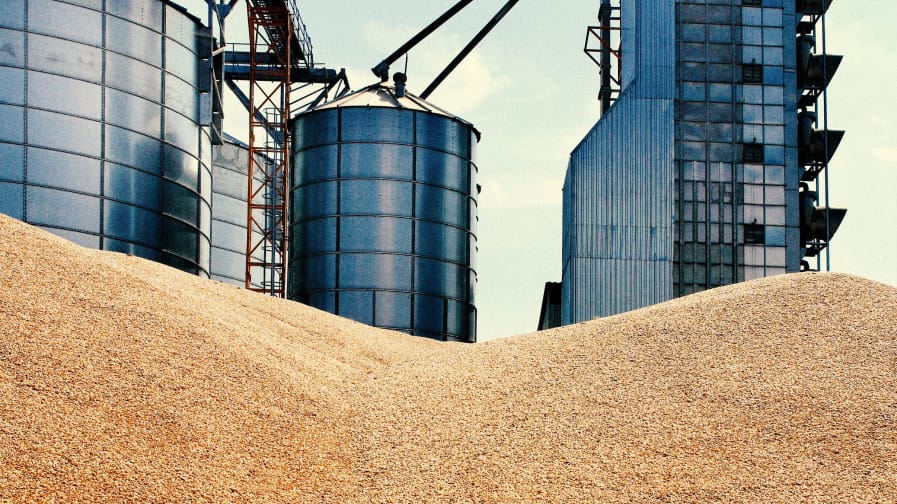
Expand safety net coverage for more crops that directly feed people
Field corn, soybeans, and cotton make up a huge chunk of acreage enrolled in federal crop insurance programs,54Shields (2015) at summary; Schnepf (2019) at 2. while many fruits, vegetables and nuts are ineligible for many programs.55Rosa and Johnson (2019) at 9; Smith (2019) at 43 to 44. Expanding safety net coverage to more specialty crops would aid farmers to shift to new production systems and diversify their operations.
Require farmers to implement organic practices to participate in safety net programs
This would provide a huge incentive for farmers to shift from ecologically depleting monocultures to ones that incorporate cover crops, crop rotation, and no-till farming. Safety net programs should also promote crop and livestock systems that are appropriate and sustainable for each region. In turn, organic practices would build soil and help make farmland more resilient to future climate events, reducing reliance on disaster insurance.
These crucial changes will encourage organic practices and stop propping up factory farms with taxpayersubsidized feed. However, we must also correct past failures of safety net programs to include historically underserved farmers, including farmers of color as well as female and beginning farmers.56Graddy-Lovelace and Diamond (2017) at 78.

2: Redirect public funding toward organic and regenerative agriculture
We must boost funding for climate-resilient agricultural seeds, breeds, and techniques, while closing loopholes that funnel public money to factory farms.
Big Ag has perfected the art of funneling public dollars to prop up industrial agriculture’s status quo. Farm Bill money earmarked for conservation programs flows to factory farms, and agribusinesses court public universities to develop patented seeds.57FWW analysis of EQIP payments, using data received from the Environmental Working Group; FWW. “Public Research, Private Gain: Corporate Influence Over University Agricultural Research.” April 2012 at 1. It is time to end public research for private gain and to instead invest in building a food system that works for every farmer, food chain worker, and consumer.
Increase funding for regenerative practices and climate-resilient seeds and livestock breeds
The USDA spends billions of dollars each year on agricultural research, yet little of this focuses on regenerative systems.58Lehner, Peter and Nathan A. Rosenberg. “Legal pathways to carbon-neutral agriculture.” Environmental Law Reporter. Vol. 47. 2017 at 14; DeLonge, Marcia S., Albie Miles and Liz Carlisle. “Investing in the transition to sustainable agriculture.” Environmental Science & Policy. Vol. 55, Part 1. January 2016 at 267. Farm Bill funding should prioritize practices that reduce chemical inputs, build soil, and help farmers adapt to climate chaos. Climate-resilient seeds should be developed to respond to specific geographical conditions. State extension services can help distribute innovative seeds and breeds to farmers and encourage farmers to save seed and break free from buying expensive patented seeds year after year. Finally, future Farm Bills should boost financial and technical support to help farmers, especially historically underserved farmers, transition to USDA Organic certified operations.
Close “conservation” loopholes that fund factory farms and reject false solutions
Public money from Farm Bill conservation programs flows to factory farms. For example, the Environmental Quality Incentives Program (EQIP) is supposed to provide funding and technical assistance to farmers implementing conservation practices such as cover cropping (plants grown to help manage or protect soil) and stream protection. However, the 2002 Farm Bill made changes to EQIP to allow factory farms to participate, including mandating that 60 percent of all funding go toward livestock operations (reduced to 50 percent in the 2018 Farm Bill).5968 Fed. Reg. 6655-6656. February 10, 2003; 84 Fed. Reg. 69272-69273. December 17, 2019.
EQIP-funded projects on factory farms come at the expense of small livestock and crop farmers who are turned away due to limited funding.60FWW analysis of CRS. “Environmental Quality Incentives Program (EQIP): Status and Issues.” R40197. May 9, 2011 at Table 3 at 8. In Iowa, nearly one-third of all EQIP funding from 1997 to 2015 supported factory farm practices, including $62 million to build facilities to store animal waste. These funds could have instead supported 7,500 additional projects at smaller farms.61FWW analysis of EQIP payments, using data received from the Environmental Working Group.
EQIP, along with another Farm Bill program called the Rural Energy for America Program (REAP), also funds false solutions to the climate crisis like digesters on factory farms. Digesters process manure and other waste into factory farm gas62Ibid.; USDA. Rural Development. “OneRD Guarantee Loan Initiative: Rural Energy for America Program (REAP).” September 2020 at 1; Environmental and Energy Study Institute. “Biogas: Converting Waste to Energy.” October 2017 at 1; U.S. Environmental Protection Agency. “How does AD work?” Available at https://www.epa.gov/anaerobic-digestion/basic-information-about-anaerobic-digestion-ad. Accessed July 2020. — a dirty, polluting energy source.63Kuo, Jeff. California State University, Fullerton. “Air Quality Issues Related to Using Biogas From Anaerobic Digestion of Food Waste.” Prepared for California Energy Commission. CEC-500-2015-037. March 2015 at 2, 9, and 10. These digesters built with taxpayer money simply prop up factory farms and entrench fossil fuel infrastructure. The next Farm Bill must close loopholes that enable factory farms to capture conservation and energy dollars for these false solutions.
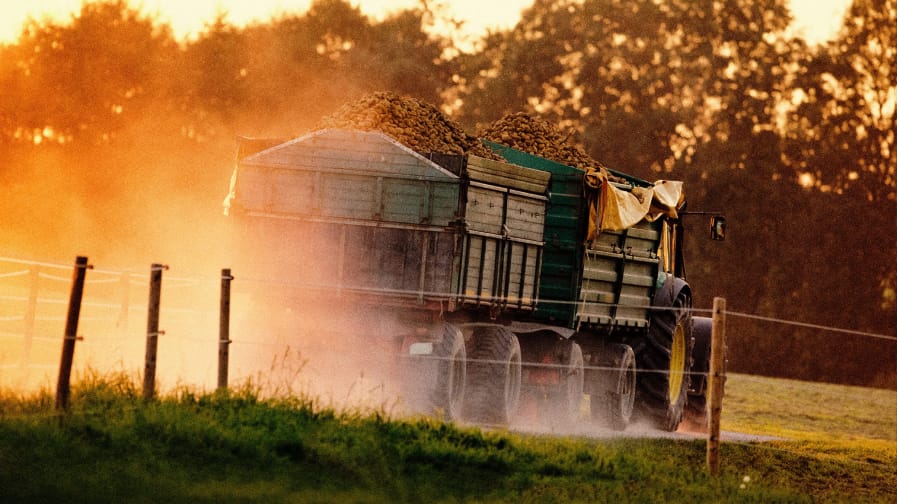
3: Increase competition within the agricultural sector
It is time to end the era of mega-mergers. We must finalize strong Packers and Stockyards Act (PSA) rules and enforce antitrust legislation.
The 2008 Farm Bill included the first-ever livestock title intended to address the lack of competition in the livestock sector. The provisions included a requirement to implement mandatory country-of-origin labeling (MCOOL) for meat products. It also directed the USDA to develop new rules under the Packers and Stockyards Act (PSA) to ensure that livestock producers are treated fairly by meatpackers and poultry companies.64CRS. “Animal Agriculture: 2008 Farm Bill Issues.” RL33958. January 2009 at 9 to 10 and 14 to 16. But Congress overturned MCOOL for meat in 2015, following threats from the World Trade Organization.65Food Safety News. “USDA ends COOL enforcement with President’s signature on omnibus bill.” December 21, 2015. Today, meat raised abroad but processed in U.S. processing facilities can legally be labeled as “Product of USA,” misleading consumers.66USDA. Food Safety and Inspection Service. “Food Standards and Labeling Policy Book.” August 2005 at 155 to 156; Haughney, Christine. “Groups ask USDA to tighten ‘Product of USA’ labeling on meat.” Politico. June 14, 2018.
And as of December 2022, the USDA has yet to implement the long-awaited update to the PSA rules. This is thanks in part to years of obstruction by Congress; more recently, the Trump administration withdrew rules finalized under the Obama administration. President Biden’s USDA has signaled its commitment to finalize a set of three rules to strengthen PSA enforcement. In the meantime, contract farmers wait for protection from unfair and abusive practices by meatpackers and poultry processors.67Mayer, Amy. “USDA seeks comments on proposed changes to poultry contracting and tournaments.” Agri-Pulse. June 22, 2022; Berger, Matthew and Christopher Bowler. “An expansive leap: The Grain Inspection, Packers and Stockyards Administration’s unjustified attempt to grow the Packers and Stockyards Act.” Mitchell Hamline Law Review. Vol. 43, Iss. 2, Art. 1. 2017 at 365 to 366; Kelloway, Claire. “Trump administration guts office designed to protect farmers from ag monopolies.” Food & Power. December 6, 2018.
While we await much-needed Congressional reform to address MCOOL, the next Farm Bill should strengthen the “Product of USA” label to bar it from being used on meat raised outside of the country. Additionally, the Farm Bill should be expanded to include a standalone competition title that addresses consolidated market power across the entire food chain, including dairy, seed companies, fruit and vegetable buyers, and grocery retailers.
4: Invest in regional food hubs
We have to build and support the infrastructure to connect farmers to local processors and consumers.
Farmers need access to open, competitive markets to thrive. However, agribusiness consolidation has all but wiped out our nation’s smaller-scale slaughterhouses, grain mills, and mom-and-pop grocery stores.68MacDonald, James M. et al. USDA ERS. “Consolidation in U.S. Meatpacking.” AER-785. February 2000 at iii; Williams, Gregory D. and Kurt A. Rosentrater. Tyson Foods and USDA. “Design Considerations for the Construction and Operation of Flour Milling Facilities. Part I: Planning, Structural, and Life Safety Considerations.” Paper No. 074116. Written for presentation at the 2007 American Society of Agricultural and Biological Engineers (ASABE) Annual International Meeting. Minneapolis, Minnesota. June 17-20, 2007 at 1; FWW. “Consolidation and buyer power in the grocery industry.” December 2010 at 1 to 2; Mooney, Pat. ETC Group. “Too Big to Feed: Exploring the Impacts of Mega-Mergers, Consolidation and Concentration of Power in the Agri-Food Sector.” IPES-Food. October 2017 at 17. It is hard to envision a food system that is free from highly consolidated supply chains.
Rebuilding our regional food infrastructure will not happen overnight; it requires public investment and political will. Farm Bill funding should invest in programs that connect local farms to the grocery stores and restaurants where consumers spend their food dollars.69FWW analysis of USDA ERS. Food Expenditure Series. “Nominal food and alcohol expenditures, with taxes and tips, for all purchasers.” Updated June 2, 2020. This includes increasing funding for regional food hubs that help smaller farms distribute and sell their products in new markets that would otherwise be difficult to enter.70Barham, James et al. USDA AMS. “Regional Food Hub Resource Guide: Food Hub Impacts on Regional Food Systems, and the Resources Available to Support Their Growth and Development.” April 2012 at 1.
Small farms often lack the volume and consistency of products to sell directly to retailers or food service institutions, which prefer to purchase from a single entity rather than from several small farms. A food hub can help bridge this divide by connecting several smaller farms with regional buyers. Some food hubs even invest in the infrastructure farmers need to bring their products to market, like warehouses where food is stored, packed, and labeled.
What distinguishes food hubs from other local distributors is that their goal is to improve the economic, social and environmental health of their communities. As such, they are committed to providing farmers with fair prices and longstanding relationships rather than undercutting them in search of the cheapest alternative.71Ibid. at 4 to 7.

Conclusion
It is time to craft a Farm Bill for all. Instead of bowing to agribusinesses’ desire for cheap commodities, we need to reinstate tried-and-true supply management techniques that avoid the pitfalls of overproduction while providing guaranteed living wages to farmers.
We also need to redirect public funding to support farmers facing the challenge of climate chaos while supporting organic regenerative practices.
Achieving these goals means fighting the corporate interests that want to maintain the status quo. We must hold our elected leaders accountable and pressure them to support Farm Bill policies that truly work in the interest of farmers and consumers. Only then can we rebuild a food system that achieves environmental stewardship, provides living wages to farmers and food workers, and ensures access to fresh and healthy food for all.
Help your friends understand why this upcoming legislation is so important!
Endnotes


